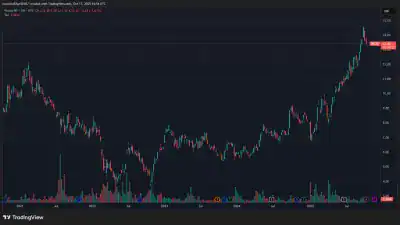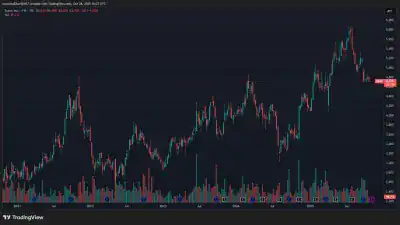Key Takeaways:
- Consumer hardship relief activity is rising post-COVID and may signal upcoming credit deterioration.
- Grants, emergency aid, and municipal hardship programs are often precursors to delinquencies and insolvency spikes.
- Structured credit and consumer ABS managers can use hardship data as an early warning system.
- Hedge funds using alt-data strategies can incorporate nonprofit and grant datasets into risk models.
- These signals are especially relevant for exposure to fintech lenders and subprime credit.
What Hardship Relief Can Tell Us About Credit Risk
Most hedge fund managers keep a close eye on macro signals, things like Fed policy shifts, credit spreads, or unemployment data, to get a read on consumer credit risk. Tools like FICO scores and delinquency rates help too, but they often tell us what’s already happened, not what’s coming.
This is where behavioral signals are particularly relevant. A sharp rise in hardship grant applications, for example, might seem outside the usual data set, but it can be one of the earliest signs that financial stress is building, especially in lower-income households.
These programs, ranging from emergency cash aid to utility relief, are typically tapped before missed payments or defaults show up. For hedge funds with exposure to consumer credit, that makes hardship data a valuable early-warning tool that could sharpen models and improve timing.
The Post‑COVID Surge in Hardship Relief
The post-pandemic period saw an unprecedented increase of hardship assistance across federal, state, and municipal channels. Emergency rental assistance, moratoriums on utility disconnections, and targeted cash transfers formed the backbone of this response. Though implemented unevenly, these interventions created a temporary support system that would support households facing acute financial disruption.
Recent figures validate and highlight this distress. In December 2024, it was reported that over 27 percent of nonelderly adults were food insecure, a sustained elevation compared to pre-pandemic levels. Meanwhile, the Federal Reserve noted that 36 percent of individuals in households with incomes of less than $25,000, had skipped full bill payments in the last month prior to taking the survey. These data points illustrate both the scale of hardship and the continued relevance of temporary relief infrastructure.
These programs often function as stopgaps during financial distress, but for hedge funds, they can signal upcoming credit events. Online resources now curate comprehensive lists of grants for hardship, allowing financially strained households quick access to emergency aid. Such programs are increasingly tapped before formal defaults, offering timely signals to credit-sensitive investment models.
Why It Matters for Structured Credit and ABS
For hedge funds with exposure to asset-backed securities (ABS), mortgage-backed securities (MBS), or unsecured consumer lending, identifying borrower stress before it surfaces in traditional credit data is essential. Hardship relief trends offer that lead insight, an early warning signal often missed by lagging indicators.
A surge in hardship grant applications can pre-empt rising delinquencies in subprime auto or personal loan segments. These trends also coincide with borrower score downshifts, from prime to near-prime, and increased loan deferrals or forbearance requests. Portfolio managers can overlay ZIP code-level hardship-application data with ABS performance across tranches to identify at-risk exposure ahead of time.
Structured credit strategies have long involved balancing technical pricing models with more nuanced, real-world indicators. Some credit-focused funds, such as Anchorage Capital and BlueMountain Capital, have historically incorporated non-traditional data sets into their views on consumer portfolios, including behavioral trends and geographic risk factors. This approach aligns with the broader shift toward integrating early warning signals, like hardship relief activity, into credit and securitization models.
Lenders focused on lower-income borrowers tend to feel financial shocks earlier than most. That’s why companies like Credit Acceptance Corp. (CACC) in the subprime auto space, or Upstart Holdings (UPST) in unsecured personal lending, are worth watching when hardship relief applications begin to rise. These behavioral shifts can show up before missed payments or charge-offs hit the data. For funds holding or shorting these names, staying ahead of borrower distress with real-time signals may offer a sharper edge.
Alternative Data Integration
For hedge funds seeking an edge in credit modeling, alternative data offers a powerful complement to traditional indicators. Sources such as nonprofit grant disbursement records, scraped application portals, and utility shutoff data can help quantify borrower distress weeks before it appears in credit bureau reports.
Regional financial stress can be revealed at the ZIP code level: a Federal Reserve analysis found that poorer ZIP codes experienced significantly more financial distress, measured by debt-to-income ratios and weakened household balance sheets, than wealthier areas during economic downturns.
Using Behavioral Data to Model Credit Risk in Real Time
Some financial data firms, hedge funds, lenders etc now use web scraping to track hardship relief program usage at the ZIP code level, with updates as frequent as weekly, faster than traditional credit bureau data, which typically lags by 30 to 45 days. Spikes in grant applications can also precede credit score declines or repayment gaps, giving portfolio managers early visibility into rising household risk. This approach mirrors a broader shift among funds using localized, real-time signals to capture stress before it appears in headline metrics.
For instance, a quant-focused fund might track local hardship claims and compare them with the performance of unsecured loan lenders to spot early signs of trouble. While this type of strategy isn’t always disclosed publicly, it reflects how more hedge funds are starting to use real-world behavioral data to improve their credit models. Funds monitoring platforms like Upstart Holdings (UPST) or SoFi Technologies (SOFI) can use similar inputs to estimate cohort-level risk and adjust exposure accordingly.
Tactical Applications for Hedge Fund Strategies
Hardship relief signals offer tactical advantages for hedge funds seeking early visibility into consumer credit stress, particularly in segments where traditional indicators lag. For long/short equity funds, a sustained rise in hardship grant activity can be an early flag for short exposure to vulnerable fintechs or subprime lenders.
When liquidity dries up for lower-income borrowers, companies like Affirm (AFRM) and Upstart are often among the first to show signs of strain. Their business models, built around predicting repayment in unsecured lending can quickly feel the impact when economic conditions tighten.
For macro-focused funds, tracking hardship grant activity at the ZIP code level can offer a real-time look at regional consumer health. These local signals can help shape positions in interest rates, currencies, or sectors tied to household spending. These signals are particularly valuable when traditional macro data, like unemployment rates, lags real-world stress by weeks.
Event-driven strategies may benefit as well. Hardship activity can precede events such as loan restructurings, asset sales, or distressed takeovers, especially in credit-heavy names like Credit Acceptance Corp. operating in the subprime auto sector. These behavioral indicators offer a real-time lens into borrower risk, potentially 30 to 45 days ahead of formal credit metrics.
A Sharper Read on Credit Risk
In a market where timing is everything, spotting financial stress before it shows up in the usual data is a clear advantage. Hardship relief trends like spikes in grant applications or utility assistance, offer just that. They may not be traditional indicators, but for funds exposed to consumer credit, fintech lending, or ABS, they can reveal real strain before delinquencies or charge-offs hit the reports.
For hedge funds refining their models or tactical exposures, behavioral signals like hardship data can fill a crucial blind spot. Combined with ZIP code–level inputs, they offer timely insights that often outpace traditional metrics.





